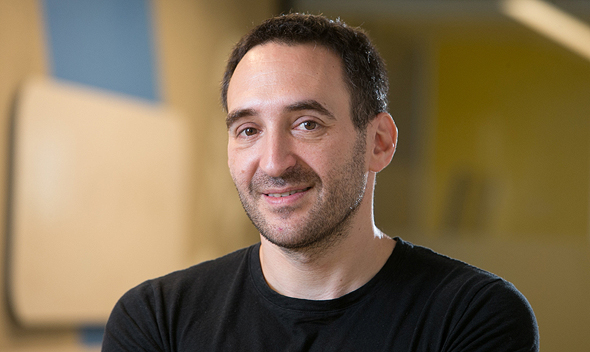It’s been three months since my business partner Ilan Leibovitch and I decided that we’re going to go for it - that our idea for an app that will soon become the “best friend” of millions of people was so exciting to us that we are willing to dedicate the next few years and beyond to it. After we reassured ourselves that there aren’t any similar products out there, we tested the idea in front of a target audience (in our case, youth and young adults), and decided that now is the time to present our solution. We defined our initial product and built a detailed plan of action and in doing so realized that we’ve got a long road ahead. We’d need lots of complex coding, a revolutionary design, meticulous research on market trends and app use, aggressive marketing, perfect production, managing user outreach, and more. All of those things don’t come cheap.
Raising capital is an integral part of the startup process. There are of course companies that started off self-funded by the founders themselves, or managed to generate revenue early on and therefore don’t need to raise external capital. But in the startup world—where the goal is to quickly build large companies—most begin raising capital at the very beginning. Just like in everyday life, where one has dreams and aspirations, but must first make money to survive, startups too have exciting visions and plans, but demand funding in order to see them to fruition.
A quick internet search on the topic will yield an infinite number of articles, interviews, and guides that teach you how to efficiently raise capital, among them advice from investors or entrepreneurs full of experiences and (truly) good intentions. Just like self-help guides suggesting help on “how to make women like you,” “how to raise happy children,” or “how to build a successful business,” those dealing with how to raise money often fall back on stale cliches, and provide advice that is intelligent but generalized and which doesn't actually help you with the process itself. This column does not propose to be one of them, but rather to briefly describe my personal experiences with this process and perhaps by and by, offer one or two pieces of advice that may help anyone who is looking to start their own company.
The point of raising initial capital is to help get to the proof of concept stage. In order to succeed, one must build an impressive and strong team, a product prototype, and present initial results showing the product’s success that will indicate its long-term potential. The assumption is that the initial funding will last for a period of one to two-and-a-half years, during which we will need to hit certain milestones, and if and when we hit them, we will have a good chance of raising more money that will lead to a more mature product, which in turn will allow us (you guessed it ) to raise another round of funding. Borrowing from the sports world, startups take things one raise at a time. In every financing round, the central question is what achievements do we need to reach to be able to raise the next round, and what is the budget we need to finance the company until we reach those goals, which in turn determines how much we need to raise. The later in the company’s life the round is, the more investors’ decisions are based on its achievements and progress. At an initial stage, like the one we just completed, there is no progress to speak of, so the investors' considerations are far different. At this stage, the investor is primarily concerned with the identity of the entrepreneurs and the state of the market the company has chosen to tackle. The assumption is that the company’s main idea will continue to change and develop along the way, and isn't as important at this point. What is crucial at this stage is to convince the investors that the company is working in a field that is in need of innovation, and that despite other competitors out there, there is still room to make an impact, and that the team is talented and has the experience necessary to address challenges in the near future. In other words, at this stage, investors are investing more in the entrepreneurs than they are in the product. This places additional pressure on the entrepreneurs and the sense that they themselves are the product. If investors have chosen to fund your idea at this point, it’s a sign that they believe in you. If not, then you might have to work a bit harder.
From my perspective, raising Initial capital isn’t just a series of actions designed to ensure company financing, but rather an important juncture between the idea and reality. When we raise money, we are required to present a concrete and detailed plan of action that demands of us to do our homework and translate those ideas of ours into an actual organized plan. The meeting with investors requires us to ask ourselves daring questions, to challenge our ideas, and ensure that we have clear answers to any questions that may be asked. In raising capital to support the company, there is also an opportunity to fine-tune our understanding and hear feedback that will point us in a better direction. Discussions with investors helped us more accurately assess risks and opportunities, and offered a chance to deliberate with experienced individuals who have been exposed to the achievements and challenges of other companies, about the challenges we ourselves face, and on the way to get a sense for which of them actually believes in and shares our vision. At the end of the day, anyone who chooses to invest in two people who are passionate about their dream does so more based on intuition or a gut-feeling than logic. Sure, the investor will ask demanding questions about the pricing of the product, how it differs from its competitors, and considerations of potential customers, but beyond their desire to sharpen the details of the plan, they want to get to know the entrepreneurs and be assured that they really believe in their vision, and are willing to work around the clock in order to achieve it. As entrepreneurs, our excitement and passion for our product constitutes the startup’s fuel, and in order to succeed we require not only capital but also partners who share our enthusiasm.
The meeting with the investors also exposes the less evolved sides of the initial plan and highlights potential pitfalls and questions about the project. My strategy has been not to wait until after the investor has already found the loopholes in the plan, but rather to present them up front. It shows the investor that we are aware of the issues and challenges that we are facing, and aren’t merely spinning a story, but have a realistic view of what the journey will entail, and that despite the fact that this investment may face risks that we have no way of addressing yet, at least we’re ‘on it’ and aren’t looking to hide it.
Once we reach the advanced stages of raising capital (when the product is already on the market), the process will be completely different. At that stage, we must have clear numbers that show our product is consistently being used, and at an even later stage, provide actual figures that show gains and revenue. In the first stage, all we had to offer the investor was our vision and how it would change people’s lives. Some of our discussions even began to veer off from concrete topics, where we’d fantasize about the future of the company and personal stories of times in our life when people told us they’d dreamed of just such a product. Once that happens you begin to realize that the investor sitting in front of you really resonates with your idea. Therefore, even if you have many doubts about the various unknowns and understand that it will be a long journey, you can be reassured that such an investor will be there to embark on it with you.
Shaul Olmert is a serial entrepreneur and the co-founder and CEO of mobile app developer Piggy. He formerly founded interactive content company Playbuzz Ltd.


